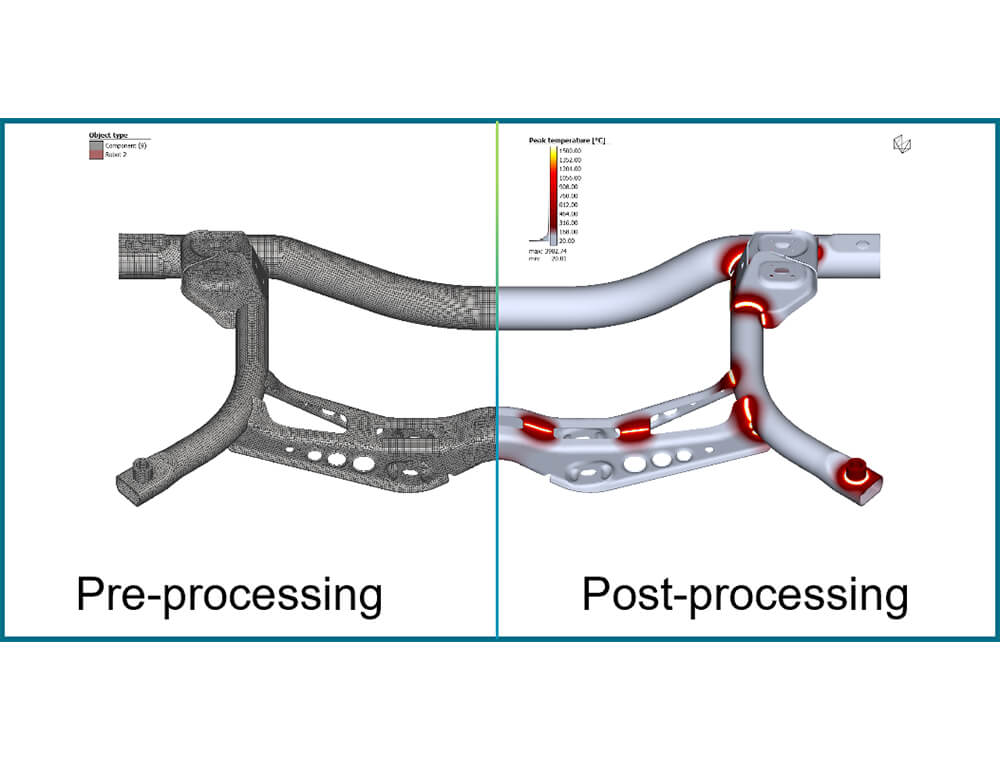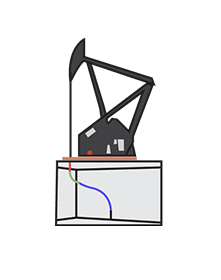CAE.CFD.FEA
Simufact Weld v6
Special weld structure software for virtual tests and process design for the optimisation of assemblies
Welding Process Simulation Software
Robustly simulate complex multi-station fixturing and assembly of complex assemblies with hundreds of joints. Perform a “virtual tryout” before the first part is fabricated.
Simufact Welding is used to model and optimise a variety of thermal joining processes, taking into account the welding sequence and fixture.
One of the biggest challenges in welding is the thermal deformations or residual stresses of the entire assembly that occur after a non-optimised welding and clamping process. As a result, subsequent assembly processes cannot be easily performed because the geometry of the sub-assembly is out of tolerance. With Simufact Welding, the welding process and parameters can be optimised to achieve the desired product quality.
With the Arc Welding module common arc welding processes are simulated. Residual Stress, strain and distortion as caused by the welding process are predicted. This enables an improved quality and dimensional control.
Simufact Welding allows to evaluate the impact of vaious parameters, like: weld sequence, arc welding process parameters and fixturing strategy.
Multiple weld robots can be configured. Weld fillets are modelled very easily using the internal fillet generator.
Simufact Weldiing makes use of a comprehensive material database that can be extended by the user.

Laser- and Electron Beam Welding processes are simulated to predict the local distribution of residual stress, strain and distortion.
Simufact Welding takes into account the specifics of a Laser or Electron Beam heat source. This complements the extensive capabilities that are offered for simulating arc welding processes and enables an accurate prediction of any physical Laser and Beam welding process.
With Simufact Welding, Resistance Spot Welding processes are simulated with a high accuracy. The impact of multiple parameters like spot sequence, welding process parameters (force, current, time) and fixturing/clamping strategy on the weld structure is predicted.
The flexible configuration of the simulation in different modes (thermomechanical, mechanical with electrode movement and simplified) enables a fast simulation for complex assemblies.
Simufact Welding enables the quick and efficient setup of robust laser metal deposition (DED) models in order to calculate and evaluate for stress, strain, distortion, thermal history, and hot spots during manufacturing and post processing.
Common robot programming such as the G-Code can be utilized - This allows users to simply import existing tool paths instead of defining weld paths manually.
Brazing is a thermal process that applies hot soldering material to join parts. The Simufact Welding Brazing module takes care of the specifics of this process: the heat input for example is limited to the soldering material only - the soldering material itself is modelled by fillets.
Brazing simulations can be defined using both conventional and beam heat sources, or a combination of them.
Virtual Clamping enables to predict the exact geometry for parts and assembled structures. Simufact Welding simulates the behavior of parts as they are clamped and welded in their designated (for example: vehicle) coordinates - This dramatically reduces the need for prototypes or tryouts.
Stress relieving reduces residual stresses in the assembly after welding. Usually the application of this heat treatment method involves controlled heating of the assembly, a certain holding period at elevated temperature as well as controlled cooling - The simulation enables virtual tryout to achieve the best possible heat treatment process
Related articles
- ThermoSientific AMIRA/AVIZO 3D 2025.1
- Star CCM+ 2510 R8
- Autodesk Inventor Nastran 2026.2
- Simulia XFlow 2026 Build 124.01
- Maplesoft Maple 2025.2
- Maplesoft MapleSim 2025.2
- Simio Enterprise Edition v19.280.48282
- Flownex Simulation Environment 2025 R3 v9.0.4
- CFTurbo v2025 R2.2.121 + CFTurbo FEA v2025 R2.0
- DragonVision
Comment/コメント
Comment list/コメントリスト
- No comments/コメントはありません



